-
Car Reviews
- All reviews
- Midsize SUVs
- Small cars
- Utes
- Small SUVs
- Large SUVs
- Large cars
- Sports SUVs
- Sports cars
- Vans
Latest reviews
- Car News
-
Car Comparisons
Latest comparisons
- Chasing Deals
The Suzuki Ignis is a convenient and thrifty way to get around town, but does the tiny SUV live up to the claim as being all the car you’ll ever need?
The Suzuki Ignis is now in its second generation, following on from the FH shape first introduced to the market back in 2000. Interestingly, it was badged initially as the Chevrolet Cruze for overseas markets such as the US and, much more locally, as the Holden Cruze here in Australia.
But here I am now, somewhat confused: is the Ignis a hatchback or an SUV?
Suzuki’s marketing for the car states that the Ignis “isn’t for indecisive people; it’s for people who’ve decided they want everything”.
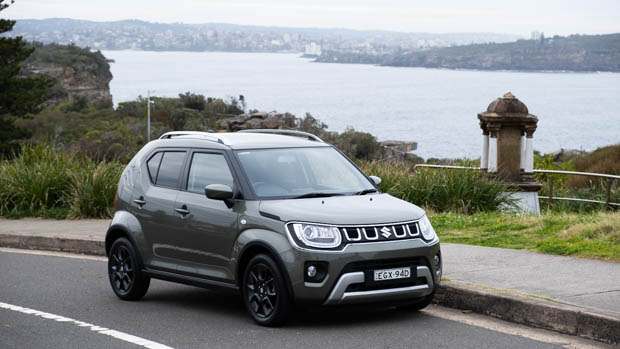
So the Ignis creates its own path as possibly the only ultra compact SUV in the segment. In typical Suzuki fashion, the Ignis has created a segment almost of its own.
The Ignis we have on test is the flagship GLX, priced at $25,585 driveaway and only available with the CVT automatic transmission. The entry-level GL manual is a cheaper proposition at $21,990 driveaway, while the automatic GL is priced at $22,990 driveaway.
At 3700mm, the Ignis is 300mm shorter than a Hyundai Venue and 440mm shorter than a Kia Stonic. It’s so small, in fact, that it is more easily compared with the Kia Picanto light city car which sits on the road at 3595mm in length.
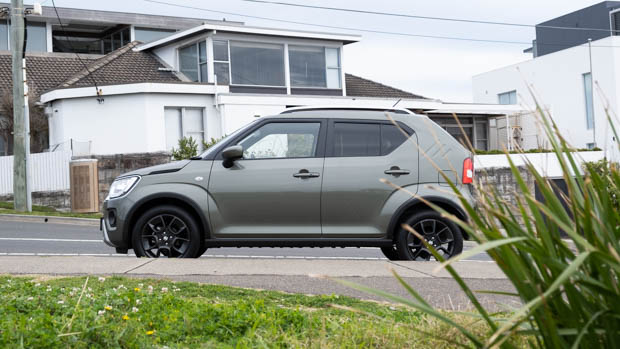
The Ignis is 1660mm wide, 1595mm high and has a wheelbase of 2435mm. And if you’re braving some off-road action, it has a breakover angle of 18 degrees and approach and departure angles of 20 and 38 degrees respectively.
It’s these provided stats that make me think that Suzuki believes the Ignis is somewhat of an SUV.
The Ignis uses the same powertrain as found in the Baleno and Swift models – a 1.2-litre naturally-aspirated four-cylinder engine that produces 66kW of power at 6000rpm and 120Nm of torque at 4400rpm. The little engine is mated to a CVT automatic transmission which sends the power and torque to the front wheels only. A manual-shifting version is available, too.
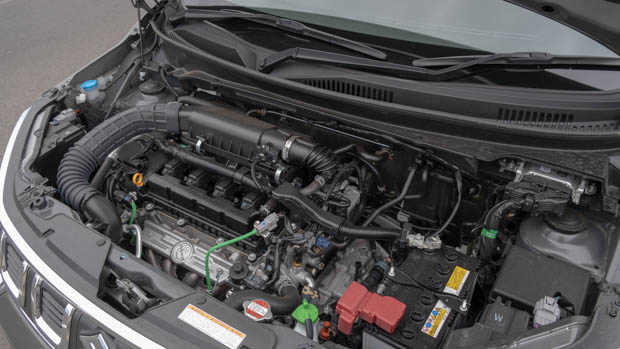
Suzuki’s Ignis has been selling pretty well in Australia, with 1224 units sold up to July 2022, which is an increase from the 1121 Ignis units sold up to the same point in 2021.
Suzuki’s micro SUV is currently outselling both the Nissan Juke (930) and Renault Captur (836) and is trailing closely behind the Ford Puma (1380). However, the Ignis is still well behind the likes of the Toyota Yaris Cross (4942) and Hyundai Venue (4457), both of which have around four times the amount of units sold.
But let’s now dive into every bit of the Ignis and find out more about this cute micro SUV.
Driving the Ignis day to day, it’s extremely manoeuvrable with its small overall length and tight turning circle. Parking the little Ignis is a breeze, which is sure to make other folks with large SUVs or dual-cab utes jealous.
Around town, the Ignis shines, with its little 1.2-litre four pot whirring along in traffic. Its 66kW/120Nm outputs won’t make you accidentally break any speed limits, however in low load throttle applications, the Ignis makes for pretty efficient motoring.
It’s only when you hit the freeway onramp that the Ignis somewhat struggles. It isn’t slow, but could do with getting up to speed a little bit quicker to make merging into high-speed traffic easier and less stressful.
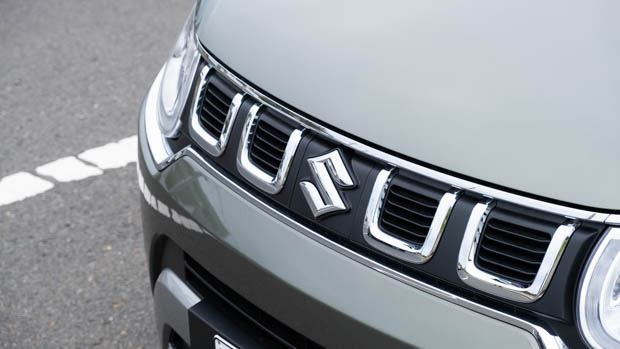
Once at speed at either 100 or 110km/h, the Ignis feels remarkably stable for a car that only weighs 865kg. Trucks blasting past in the fast lane will make the car shake and wobble, though – definitely something to watch out for.
On the highway, the Ignis’s engine is quiet, with the loudest part of the car being the road and tyre noise that fills the cabin with an unpleasant drone that only dies down at lower speeds. Compact SUVs like the Ignis are often a bit noisy, but I felt that the Ignis was particularly poor in the area of NVH (noise/vibration/harshness). Yes, it can be drowned out by cranking the stereo, but that isn’t always the best option.
We drove the Suzuki Ignis GLX through some of the wilder outer Sydney roads that were marked over and over with large potholes, making the drive a frankly hair-raising experience.
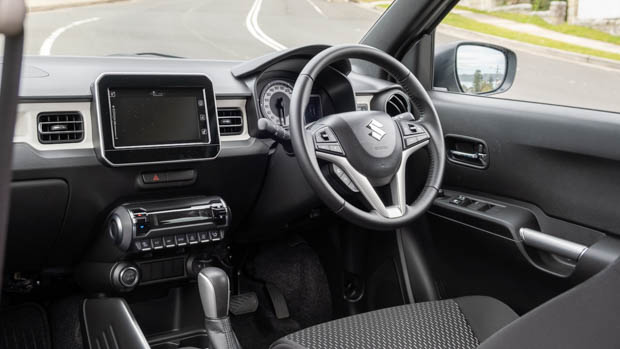
Dodging this way and that to protect the little Ignis, I found the front suspension to take the brute force of these impacts fairly well, however my rear occupants (sorry, Mum and Dad) weren’t so comfortable, and voiced their concerns about how firm the rear torsion-beam suspension was. That’s to be expected with cheaper cars like this one, but it could be slightly better and more refined.
If you want to whip your way around corners out on the open road, you certainly can do so, however the seats aren’t quite up to scratch when it comes to side bolstering, so you slip and slide more than usual when pushing the Ignis through a country corner bend.
There is something slightly unnatural about the way the Ignis goes through a corner, likely due to its higher stance and softly sprung front-end. Then again, I must remember that this little car is not a performance model.
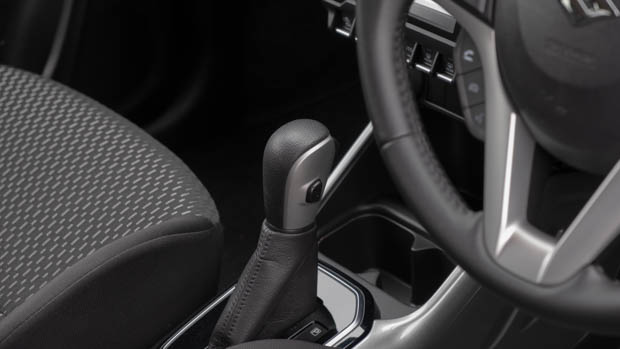
When you give the Ignis full throttle on corner exit, it only results in the engine screaming for help as the CVT lets it drone away. The powertrain does not sound pleasing but does its main job of getting you from A to B without too much strain or stress.
Many prospective Suzuki buyers will think first and foremost about the size and practicality of the Ignis rather than the engine and its performance, so in this instance, the powertrain does its job just fine, however it is certainly not the car’s highlight.
For those who want some self-shifting thrills, a manual transmission is available for the Ignis. Having not tested it yet, we suspect it’s the sweeter option, also likely pairing better with the 1.2-litre four-cylinder.
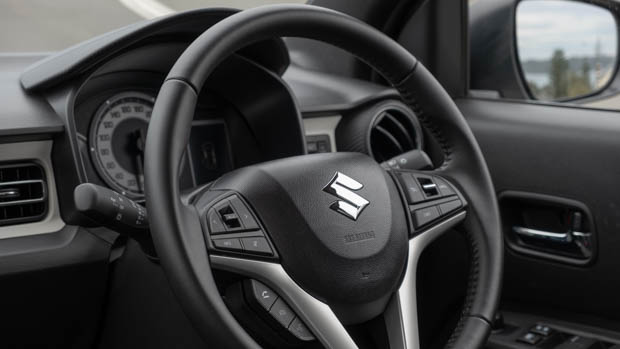
An alarming part of the Ignis when driving is the fact that, apart from traction control and ABS braking, there are no active safety aids – even on the higher GLX trim. There is no lane-keep assist, no autonomous emergency braking, no blind spot warning or rear-cross traffic alert. The Ignis unfortunately does not hold a current ANCAP safety rating, either.
This negatively impacts its credentials as a my-first-car candidate, especially in Ignis’s suitability for inexperienced drivers.
In 2022, it is almost a given that a vehicle will be fitted with the now almost standardised safety features such as forward AEB and lane keep assist. It’s a shame that Suzuki could not make that work for the Ignis.
The off-roading Suzuki Jimny in both standard and Lite variants come standard with AEB, lane-departure warning, a weaving alert and high beam assist. The same can be said for the Suzuki Swift, which also gains rear cross-traffic alert and blind-spot monitoring.
Stepping inside the Suzuki Ignis GLX, the first thing that surprises this reviewer is the soft and comfortable cloth seats. The rear bench seats aren’t quite as comfortable as the fronts, however they are supportive and soft considering the relatively cheap cost of entry.
The interior trim is justifiably cheap in finish, considering its attainable entry price, with the doors, dash and centre console all finished in hard plastic.
The design of the air vents and flickable aircraft-like toggle switches is a nice touch and makes the Ignis somewhat unique compared to its rivals.
In the first row, there is a USB-A charging point, along with a now old-school auxiliary cable input and a 12-volt socket to power a dashcam or GPS.
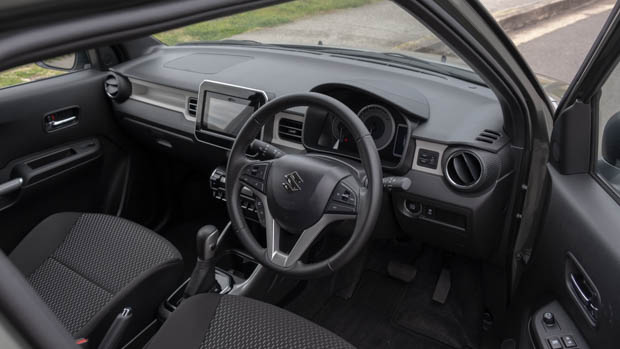
The central 9.0-inch touchscreen is fine, however the software is outdated and has aged poorly. Although Suzuki says that Apple CarPlay and Android Auto are included in the Ignis, I couldn’t get my phone to pair properly – even with the phone physically connected via a cable – which was a shame.
I ended up driving to the sounds of the radio, which was refreshing, but not ideal as I rely heavily on Spotify and phone connectivity/mirroring for essentials such as satnav, as a lot of people do these days.
The GLX is fitted with four speakers and two tweeters. However, the sound quality of the system seemed tinny and somewhat distorted to these ears.
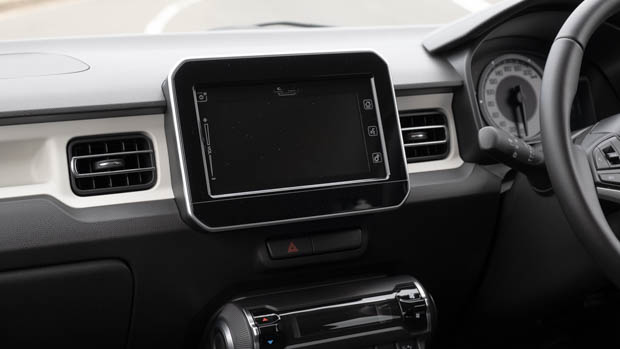
In a way, the Suzuki Ignis shares a lot of the same rustic interior characteristics as its more off-road focused and slightly larger sibling, the Jimny. Both interiors are stripped back to the bare necessities, but I like that you can concentrate more on the driving than fiddling around with the abundance of tech inside the cabin.
One last ergonomic gripe was the cupholders – they couldn’t quite hold a regular cup of coffee or a 600ml bottle of soft drink properly. There seemed to be too much play, which caused my drink to slosh around when cornering. Not a huge problem, but definitely an annoyance for commuters who might have a drink with them on the way to work and back.
The Ignis has 264 litres of boot space with the rear seat in an upright position, which is only slightly bigger than the 255-litre boot in the Kia Picanto. It’s plenty of space to fit shopping or school bags, however I wouldn’t try to move house with a Suzuki Ignis.
Both variants of the Suzuki Ignis come standard with a five-year, unlimited-kilometre warranty, with services occurring every 12 months or 15,000km.
Five years of scheduled servicing for the Ignis GLX will cost $1465, averaging $293 per service. To compare, a Hyundai Venue Elite costs $1575 for five years of servicing, while the Volkswagen T-Cross is much more expensive, working out to be $2100 for five years (however the first service is free).

The claimed combined fuel consumption for the Ignis is 4.9L/100km for the automatic, however the lowest we could manage over the course of our testing was 5.6L/100km with a mix of highway, country and urban roads.
I don’t doubt that someone could get down to the claimed figure with one person in the car and doing constant highway commutes, however that won’t always be the case for a lot of Ignis owners.
The Suzuki Ignis is a quirky micro SUV with lots of personality and style, however it’s let down by a cheap interior, uninspiring powertrain and a severe lack of standard safety features.
If a small city car is all you need to get you from home to work and back, then the Ignis will do the job just fine, but it isn’t a car well suited to country roads or long drives on the highway. You’d be better off leaving that to something slightly larger, like a Mazda CX-3 or Ford Puma.
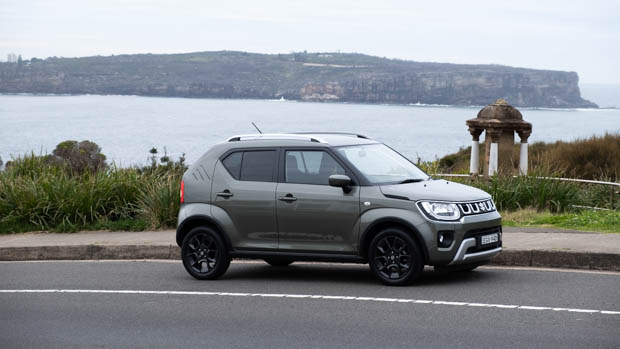
But yet again I find myself coming back to the question: is the Suzuki Ignis a hatchback or an SUV?
I still can’t decide. Although it feels like a hatchback to drive, has the same boot size of a hatchback and is around the same overall size as a compact hatchback, it also feels uniquely quirky with its slightly higher driving position.
Just like its sibling, the Jimny, the Suzuki Ignis is a thing of its own. A unique city carver ready to take you on your next adventure.
Key specs (as tested)
About Chasing cars
Chasing Cars reviews are 100% independent.
Because we are powered by Budget Direct Insurance, we don’t receive advertising or sales revenue from car manufacturers.
We’re truly independent – giving you Australia’s best car reviews.
The estimate provided does not take into account your personal circumstances but is intended to give a general indication of the cost of insurance, in order to obtain a complete quote, please visit www.budgetdirect.com.au. Estimate includes 15%^ online discount.
^Conditions Apply
Budget Direct Insurance arranged by Auto & General Services Pty Ltd ACN 003 617 909(AGS) AFSL 241 411, for and on behalf of the insurer, Auto & General Insurance Company Limited(ABN 42 111 586 353, AFSL 285 571).Because we don’t know your financial needs, we can’t advise you if this insurance will suit you. You should consider your needs and the Product Disclosure Statement before making a decision to buy insurance. Terms and conditions apply.
Indicative quote based on assumptions including postcode , 40 year old male with no offences, licence suspensions or claims in the last 5 years, a NCD Rating 1 and no younger drivers listed. White car, driven up to 10,000kms a year, unfinanced, with no modifications, factory options and/or non-standard accessories, private use only and garaged at night.
^Online Discounts Terms & Conditions
1. Discounts apply to the premium paid for a new Budget Direct Gold Comprehensive Car Insurance, Third Party Property Only or Third Party Property, Fire & Theft Insurance policy initiated online on or after 29 March 2017. Discounts do not apply to optional Roadside Assistance.
2. Discounts do not apply to any renewal offer of insurance.
3. Discounts only apply to the insurance portion of the premium. Discounts are applied before government charges, taxes, levies and fees, including instalment processing fees (as applicable). The full extent of discounts may therefore be impacted.
4. We reserve the right to change the offer without notice.